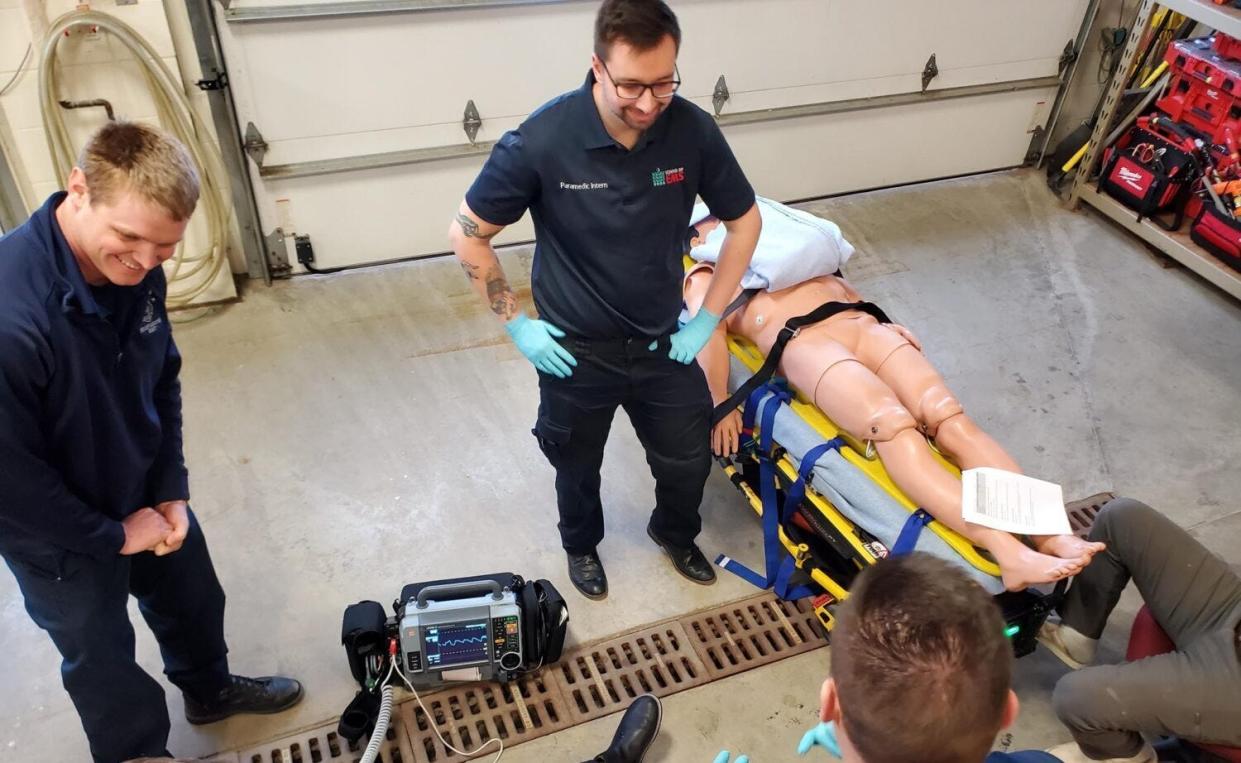State spends $11.6 million to update equipment for South Dakota ambulance services

- Oops!Something went wrong.Please try again later.
Dozens of ambulance services in rural South Dakota have been operating for years with outdated or broken patient care tools because the agencies don’t have enough money to purchase new equipment, but that’s beginning to change thanks to an infusion of funding.
Gov. Kristi Noem and state lawmakers approved three initiatives in 2022 that allocated up to $20 million for emergency medical services, hoping to bolster ambulance services in the state. The largest portion of the funds — $11.6 million worth of LIFEPAK 15 patient monitors and defibrillators, along with training, distribution, and installation fees as well as eight years of support service and data integration — are starting to be distributed to ambulance services across the state, according to the state Department of Health.
That “means everything” to the EMS workers and volunteers of South Dakota, said Keith Sharisky, training section chief at Aberdeen Fire & Rescue and president of the South Dakota Emergency Medical Services Association.
“These are the people who are willing to risk everything to save your life,” Sharisky said. “They’re the ones who will come along at 2 a.m. and work to save your life. They deserve the proper equipment and training to do that.”
The LIFEPAK tools, which are outdated or unusable in a significant number of districts, evaluate a patient’s heart and vitals and are important for treating patients suffering cardiac arrest or a stroke before they arrive at the hospital.
Sharisky estimates the monitors come along on a call 90% of the time for Aberdeen Fire & Rescue and are actually used on 70% of the calls.
“By the time the ambulance gets the patient to the hospital, there’s already a treatment plan in place because of these,” Sharisky said. “The only thing that has to be truly verified is the name, date of birth, allergies, bloodwork and, boom, they go to work. Ten years ago, everything I just said would have taken a half hour to an hour at the hospital.”
As of March 24, the state had received 75 devices. The state expects to receive the full order of 345 devices by the end of May, said Department of Health spokesperson Kieran Tate.
All 122 licensed ambulance services are eligible for the tools, but ambulance services that had malfunctioning devices, models that no longer transmit information, or outdated devices were eligible for the earliest round of distribution.
Day County Ambulance was one of the first services to receive the new monitors. The ambulance service, which was under a private company before the county took over the operation last December, owns five ambulances with a staff of 30 volunteers, said Chad Madsen, EMS director of the Day County Ambulance.
The service only had three devices at the start of the year: two “very old” LIFEPAK 15s and one LIFEPAK 12, which has been discontinued and is no longer serviceable by the manufacturer. All devices had limitations, and Madsen is hopeful the new equipment from the state will help with volunteer retention.
“There is a standard of care that needs to be given to patients, and it’s hard to do that when you don’t have the right equipment,” Madsen said. “Unfortunately, with the cost to upgrade, it’s hard to do that.”
Sharisky estimates that new LIFEPAKs cost $44,000 per device, which is out of reach for many volunteer organizations that are simply trying to “justify keeping their ambulance able to start.”
Two other initiatives by the state include a $1.7 million telemedicine program announced in November 2022 and a statewide assessment of ambulance services.
The “Telemedicine in Motion” program connects EMTs to nurses and health care professionals in hospitals to provide care to patients faster. The assessment will cost the state about $186,500, according to Open SD, and is expected to provide a report by the end of 2023.
Madsen said the assessment is “a long time coming.”
The assessment will involve several listening sessions throughout the state with EMS district members and then a report identifying “strategic placement of EMS agencies” for response times within 30 minutes, best practices for sustainability and how to improve workforce staffing, recruitment and retention.
Up to 15 $500,000 planning grants for services will be available after the assessment is completed.
“If we can just have an overall idea of what’s needed in South Dakota rather than a hundred opinions of what’s needed, that’ll make a big difference for citizens,” Sharisky said.
This article originally appeared on Sioux Falls Argus Leader: State spends $11.6 million to update equipment for South Dakota ambulance services

